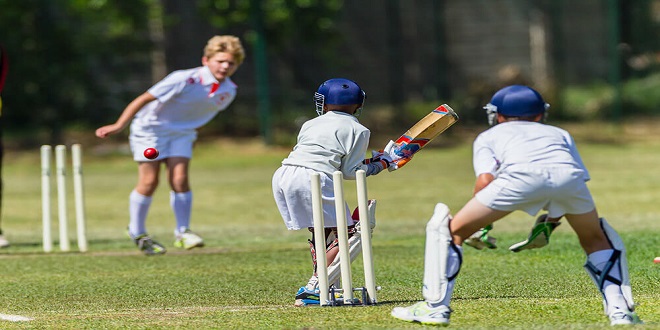
Improving Your Fitness and Cricket Skills
People sometimes scoff when they are told that playing cricket requires physical fitness. No doubt they think that the most physically demanding thing a cricketer does is lift a cucumber sandwich on to their plate at the tea interval. True, being fit enough to deal with the demands of a good cricket tea can be a tough task – all those sandwiches, sausage rolls, and pieces of cake.
Getting Match Fit
For the amateur, cricket is an incredibly time-consuming game – playing a match takes up most of a day and if you’re working that’s a big chunk out of your leisure time. And yet many club cricketers don’t practise their game. If they’re willing to invest so much of their free time playing the game why not invest just a little more to hone their skills? After all a match situation can be an unforgiving environment – even at club level – and not a good time for a spin bowler to perfect a new type of delivery or a batsman to play a shot he’s never practiced before.
Honing Your Technique in the Nets
In this section I introduce you to the concept of net practice. The nets are either fenced-off areas indoors or a specially prepared wicket outdoors where bowlers try to hone their bowling skills – and batsmen look to improve their defensive and attacking shots. They are called ‘nets’ simply because they are usually fenced in by netting.
Most professional cricketers have a net practice every day during the cricket season – which runs from April to September in the UK. Club cricketers, though, have day jobs – although of course most would rather be playing cricket – so you find most clubs run nets after work one or two days a week. When you first join a cricket club you’re likely to be invited to a net where senior players will look at your ability before offering you a place in their team.
Giving Your Batting a Boost
A batsman only needs to make one mistake to find himself dismissed. This tightrope walker existence makes it crucial for a batsman to practise.
Taking Giant Steps Forward with Your Bowling
Bowlers are a little more fortunate than batsmen. If a bowler makes a mistake in a match and delivers a ball that is easy to hit, he gets another chance with the next delivery to dismiss the batsman and therefore redeem himself and snatch the glory. But this comfort zone doesn’t last for long. If a bowler bowls poorly then, sooner rather than later, the team captain will replace the bowler with another one.
Cricket is a game that requires good hand–eye co-ordination. Of course, good hand–eye co-ordination can be a natural talent but it can also be improved. Try playing a range of sports that develop hand–eye co-ordination such as golf, squash and tennis. The fact that top international cricketers are quite often excellent golfers is no coincidence.
Looking at Fielding Drills
A group of players, ideally no fewer than four, form up in the outfield about 15 metres away from a set of stumps. Behind the stumps a player stands acting as wicket-keeper. Another player – standing near the stumps but not between the stumps and the players in the outfield – hits a ball with a bat into the outfield. Each player takes his turn to chase down the ball, collect it, and throw it in underarm at the stumps; the wicket-keeper is there to stop the ball should the fielder miss. The wicket-keeper then chucks the ball to the player holding the bat, and that player then propels the ball back into the outfield for the next fielder to chase.
Explaining Stretching
The game of cricket could almost be designed to cause muscle tears and hamstring pulls. Think about it: Cricket involves long periods of inactivity – such as sitting in the pavilion waiting to bat – followed by sudden bursts of physical exertion. Therefore, warming up and stretching exercises are very important.
Warming up
The captain should tell you a few minutes in advance that he expects you to bowl. The message may come with a shout from the captain – typically ‘Loosening-up’ – or, alternatively, the captain may catch your eye and roll his arms about, mimicking a bowling action. Whatever method of communication is used, the captain wants you to stretch as he’s likely to ask you to bowl soon.
Looking at stretching exercises
Post-match warming-down exercises are very popular nowadays. In bygone days many cricketers’ idea of post-match exercise was a pint of beer after the match. But the modern warm-down exercise involves stretches and gentle jogging. The idea is to prevent blood pooling in the limbs after intense periods of exercise. Blood pooling – as well as sounding gross – can lead to dizziness and a very melodramatic fainting fit.
Don’t perform stretches while the bowler is delivering to the batsman. If the ball is hit to where you’re fielding and you’re busy stretching you’re not going to be able to stop it; you can look a right charley in front of your team-mates.
Coaching Kids to Play Cricket
In order to ensure the future of the game of cricket, new talent is needed. In most cases this talent doesn’t just arrive, but needs to be developed through coaching. Literally thousands of cricket coaches around the globe from Manchester to Mumbai are helping to show kids first how to play the game, and then how to play it well.
Coaches are the unsung heroes of cricket. If you want to join their ranks here’s what you have to do
Last word
If you’re coaching youngsters try to encourage all-round cricketing ability. The youngster may show a preference for batting or bowling and that’s great, but they have a better chance of succeeding if they develop skills in all aspects of the game.





